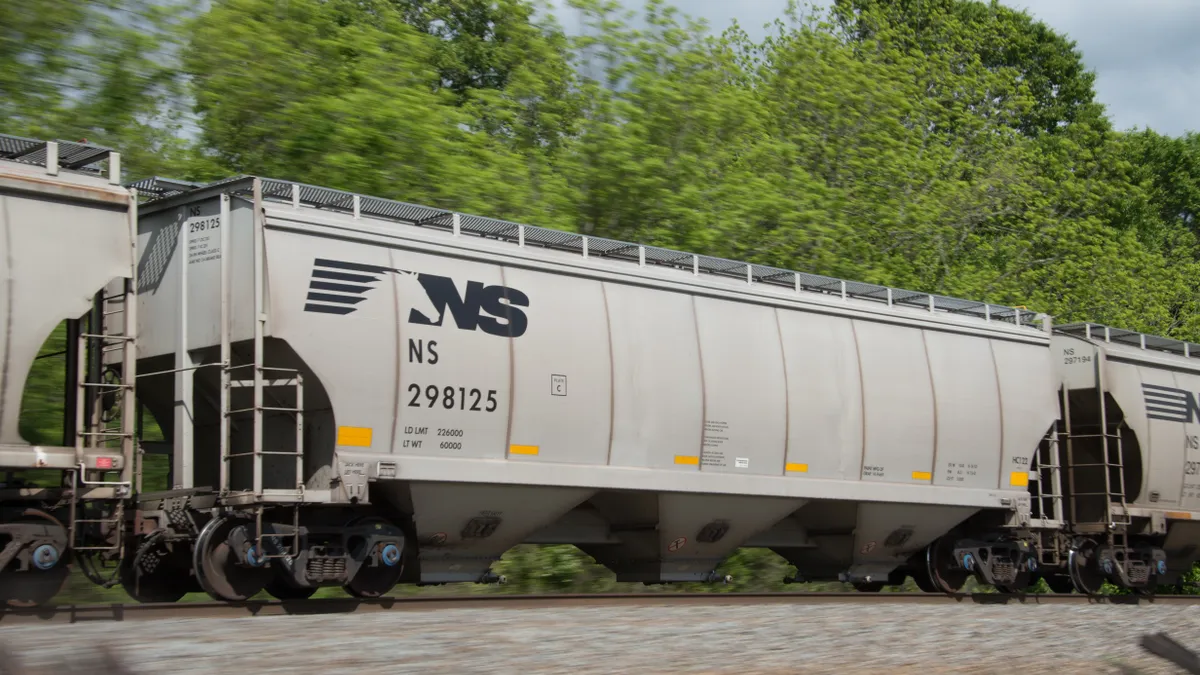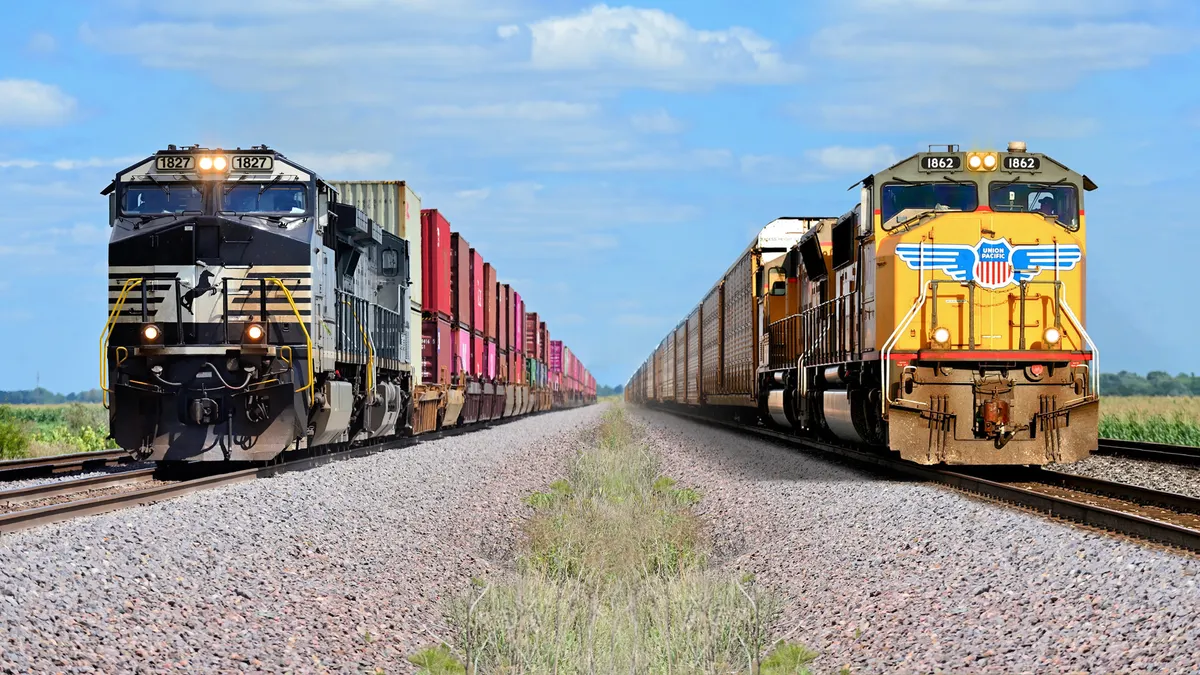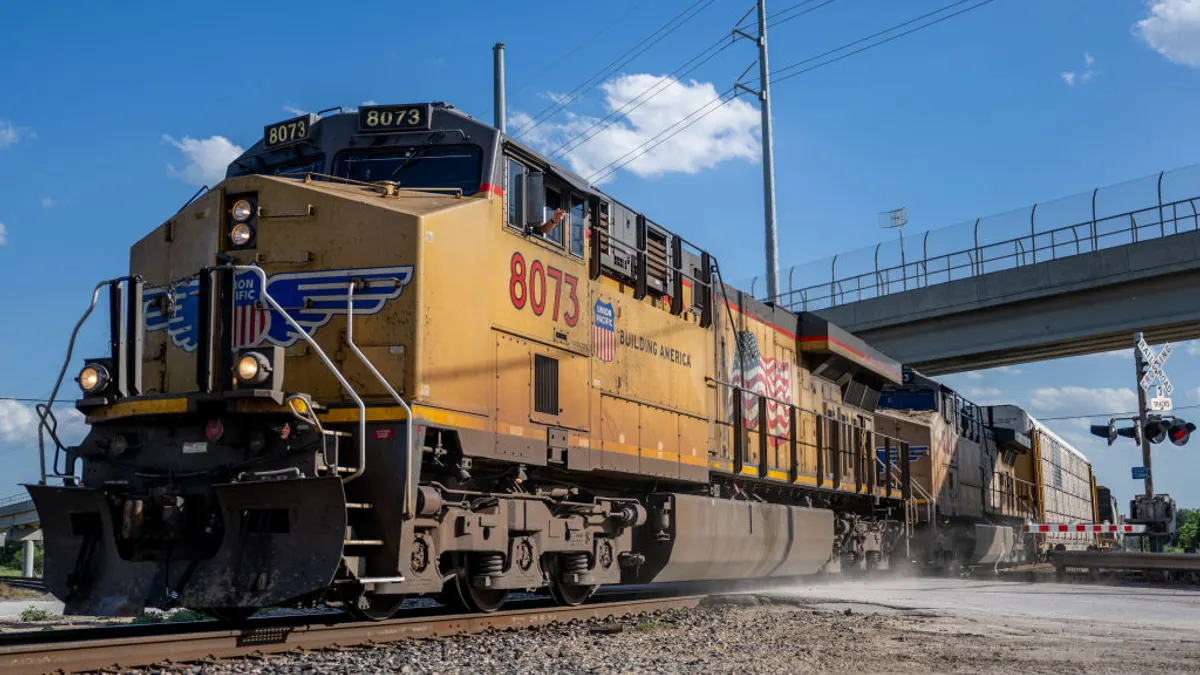Interstate 495 is in clear view from the berths at the Port of Wilmington, Delaware. One traffic light and one turn is all it takes for trucks departing the port to reach the highway and haul their containers to dense population centers along the East Coast.
And running parallel to the interstate, railroad tracks host CSX and Norfolk Southern, providing direct freight rail connections to Chicago and other points east of the Mississippi River.
This central location is one of the prime reasons Amazon and Dole have long-standing histories in the Small Wonder's largest city. When Amazon began building its fulfillment network in 1997, two locations made the list: Seattle and Wilmington. And the Port of Wilmington has been the mid-Atlantic hub for Dole and Chiquita since the 1980s.

The location offers close access to customers and labor but lower taxes and land prices than many of the surrounding markets, according to real estate experts.
Dole and Amazon are expanding their footprints in the first state. New infrastructure is going up at the Port of Wilmington. And Amazon is gearing up to move into a five-story fulfillment center currently under construction.
These moves are poised to boost the entire mid-Atlantic region with businesses seeking capacity and services to support their supply chains.
The banana hub
Dole signed an agreement in 2013 with the Port of Wilmington to renew its lease for 15 years with two optional 10-year extensions, meaning the food company could continue terminal operations with the port through 2048. The lease includes port commitments to increase the number of cranes and "other upgrades to the Dole leasehold," according to a press release from the Delaware state government.
William Goldfield, director of corporate communications for Dole, said in an email the port "is making a significant investment in infrastructure, with the goal of benefiting all customers (current and future), including Dole," without delving into specifics.
Chiquita signed a five-year contract with the port in 2014 with two five-year renewal options, which could extend the relationship through 2029.

Dole and Chiquita each call the port weekly, and it has become known in supply chain circles as a banana hub. Rightfully so, as it's the largest seaport for bananas in North America and second-largest in the world after Antwerp, Belgium.
The Port of Wilmington handled nearly 1.5 million tons of bananas and plantains in 2018. Volume in the first half of 2020 was growing, in part due to an increase in banana exports from Guatemala. The port is also a gateway for grapes, apricots, peaches, apples, pears, clementines and berries from South America and North America. Some employees at the port say there's so much fruit, they're sick of eating it.
The volume of loaded container imports has steadily increased at the port, reaching nearly 200,000 TEUs in 2019, according to Descartes Datamyne's 2020 U.S. Ports Report released in July.
The Port of Wilmington is smaller than its neighbors
The port is still smaller than its neighbors in New York/New Jersey, Philadelphia, Baltimore and Norfolk, Virginia.
But the smaller size comes with a benefit, said Lisa Himber, vice president of the Maritime Exchange for the Delaware River and Bay. "We have a lot of facilities. We have a long river. What we don't have is congestion," she said.
And what it lacks in size, it makes up for in specialization for perishable shippers.
"The Port of Wilmington offers sufficient reefer plug capacity for reefer containers and offers an abundance of temperature-controlled warehousing for storage and distribution that meets our needs," Goldfield said.
The port has six cold storage warehouses, totaling 800,000 square feet. It's the largest on-dock cold storage complex in North America, according to the port's website. Most of the fresh fruit coming into the port is stored within the gates of the port or in surrounding neighborhoods, said Dan Rattay, first vice president at CBRE.

The U.S. Department of Agriculture has certified the port's facilities for cold treatment of grapes and citrus fruits, a process that removes insects or fruit flies from produce shipments.
"If the shipment has started cold treatment while in route, they can finish it there at the port," Himber said.
The port constructed a floating berth to accommodate bulk juice tanker imports from companies such as Citrosuco, a global producer of juice, based in Brazil.
And now it's banking on a new container terminal to increase annual volume.
The Diamond State Port Corporation has submitted a proposal to build a container terminal capable of handling 1.2 million TEUs just north along the Delaware River, and public comments on the proposal are open through Dec. 1. GT USA, a division of United Arab Emirates-based Gulftainer, operates the Port of Wilmington and plans to invest $410 million in the facility.
Half of the U.S. population is reachable in 24 hours from the port, Eric Casey, CEO of GT USA Port of Wilmington, said at a Delaware State Chamber of Commerce virtual conference in July.
"We're looking at thousands of new businesses that are going to spin off," Casey said. "We're looking at new distribution centers that are going to be forming here, that are going to utilize the port to bring goods into the area."
JLL Senior Managing Director Larry Maister said the additional terminal may spark interest from food businesses to lease warehouse space in the Wilmington market.
Lawmakers in the tri-state area have spoken out against legislation (co-sponsored by Delaware Senator Tom Carper) that they say would simplify permitting for the new terminal and give the Port of Wilmington an unfair advantage compared to other ports along the Delaware River.
"There is no indication that the proposed container cargo facility plans to attract new business to the river," New Jersey State Senator Stephen Sweeney wrote in an opinion piece. "Instead, the CEO of Gulftainer ... has made it clear that Edgemoor will try to lure business away from existing ports in South Jersey and Philadelphia. In the shipping trade, they call this 'cannibalizing' existing cargoes, which is a fancy term for stealing."
Carper said the port expansion will create "more jobs and economic activity for the entire region," The Philadelphia Inquirer reported.
From port to distribution center
The deepwater port is part of the reason why an industrial site four miles to the west caught the eye of real estate developer Dermody Properties.
The property formerly housed a General Motors plant, a major economic and manufacturing engine for the area, but it sat dormant for a decade after GM decided to close the facility in 2009.
The site's proximity to I-95 and major metropolitan areas offers tenants close access to population centers and labor, according to Gene Preston, Dermody Properties East Region Partner. The space was large enough to accommodate a large number of employees. And utilities were available, despite it being a project from the 1940s when GM opened the complex.
"This acquisition started as a speculative project for Dermody Properties but ultimately turned into a build-to-suit for Amazon due to our long-term relationship with them," Jeffrey Zygler, Dermody Properties Partner, said in an email.
The developer is now in the process of constructing an 820,000-square-foot, five-story "Logisticenter" where Amazon will fulfill e-commerce orders. The center will be a robotics facility, which "allows us to increase capacity and efficiencies," an Amazon spokesperson said.
Zygler anticipates an economic revival in the area as Amazon replaces jobs lost when the GM plant shuttered. The fulfillment center will create more than 1,000 full-time jobs, according to the Delaware Prosperity Partnership.
And Amazon has a large pool to draw from, Maister said. "Within a 30-minute drive time of Wilmington, the area has a total labor force of 464,656, [18%] of which is blue collar," he said.
Similar to the Port of Wilmington expansion, the Amazon facility is expected to spawn support businesses.
"Vendors and suppliers, in turn, will be motivated to set their sights on the region so that they can service the facility," Zygler said.
Wilmington's labor force grows
The challenge to those new businesses will be finding logistics space, a factor that may stymie Wilmington's rise as a logistics hub.
Maister said the Wilmington area and I-95 corridor in Delaware lags behind the overall warehousing market because of a lack of industrial zoned land.
"Vacancy rates have fallen at a greater rate than any other submarket in the last five years and are at a record-low of 4.1% in Delaware," Maister said.
Low availability has pushed up rental rates to $5.09 per square foot, more than 12% YoY, Maister said.
"The market is changing as we speak," Rattay said. "There is almost no availability of existing product."























